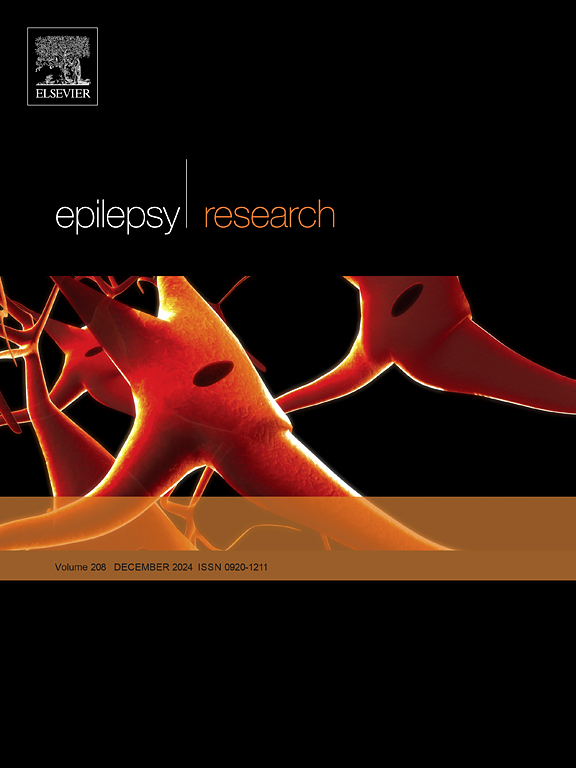Association between statin use and post-ischemic stroke epilepsy among older adults: A nested case-control study
IF 2
4区 医学
Q3 CLINICAL NEUROLOGY
引用次数: 0
Abstract
Our primary objective was to estimate the association between post-stroke statin use and post-stroke epilepsy (PSE) and assess whether sex modifies this association. Our second objective was to assess whether statin characteristics and other risk factors affect the risk of PSE overall and within groups defined by sex. We conducted a population-based nested case-control study, using linked health administrative data and including residents older than 65 of Ontario, Canada treated for an ischemic stroke between April 1, 2007, and March 31, 2017. Patients who developed epilepsy were matched with up to 10 controls on age, sex, and month. Multivariable conditional logistic regression models were used to estimate the adjusted odds ratios for PSE associated with post-stroke statin use and potential risk factors. We included 1009 patients with epilepsy and 6522 matched controls. Statin use was not associated with the risk of epilepsy in the entire cohort or in the sex-stratified analysis (IRR = 1.17; 95 % CI 0.95–1.43), and sex did not significantly modify the association (p-value=0.08). Statin characteristics did not affect the risk of epilepsy in the entire cohort; however, we observed an increased risk of PSE associated with the use of atorvastatin among females in the sex-stratified analyses (IRR = 1.26; 95 % CI 1.02–1.56). Although the risk of epilepsy did not significantly differ between statin users and non-users in the entire cohort or within groups defined by sex, atorvastatin was associated with an increased risk of PSE compared to statin non-users among women and should be further explored.
他汀类药物与老年人缺血性卒中后癫痫的关系:一项巢式病例对照研究
我们的主要目的是评估卒中后他汀类药物使用与卒中后癫痫(PSE)之间的关系,并评估性别是否会改变这种关系。我们的第二个目标是评估他汀类药物的特征和其他危险因素是否会影响PSE的总体风险,并在按性别定义的人群中影响PSE的风险。我们进行了一项基于人群的巢式病例对照研究,使用相关的健康管理数据,包括2007年4月1日至2017年3月31日期间加拿大安大略省65岁以上的缺血性中风患者。癫痫患者在年龄、性别和月份上与多达10个对照组相匹配。使用多变量条件logistic回归模型来估计卒中后他汀类药物使用和潜在危险因素与PSE相关的校正优势比。我们纳入了1009例癫痫患者和6522例匹配的对照。在整个队列或性别分层分析中,他汀类药物的使用与癫痫的风险无关(IRR = 1.17;95 % CI 0.95-1.43),性别没有显著改变相关性(p值=0.08)。在整个队列中,他汀类药物的特征没有影响癫痫的风险;然而,在性别分层分析中,我们观察到女性使用阿托伐他汀会增加PSE的风险(IRR = 1.26;95 % ci 1.02-1.56)。尽管癫痫的风险在整个队列或按性别定义的组中,他汀类药物使用者和非使用者之间没有显著差异,但在女性中,与非他汀类药物使用者相比,阿托伐他汀与PSE的风险增加有关,应该进一步探讨。
本文章由计算机程序翻译,如有差异,请以英文原文为准。
求助全文
约1分钟内获得全文
求助全文
来源期刊

Epilepsy Research
医学-临床神经学
CiteScore
0.10
自引率
4.50%
发文量
143
审稿时长
62 days
期刊介绍:
Epilepsy Research provides for publication of high quality articles in both basic and clinical epilepsy research, with a special emphasis on translational research that ultimately relates to epilepsy as a human condition. The journal is intended to provide a forum for reporting the best and most rigorous epilepsy research from all disciplines ranging from biophysics and molecular biology to epidemiological and psychosocial research. As such the journal will publish original papers relevant to epilepsy from any scientific discipline and also studies of a multidisciplinary nature. Clinical and experimental research papers adopting fresh conceptual approaches to the study of epilepsy and its treatment are encouraged. The overriding criteria for publication are novelty, significant clinical or experimental relevance, and interest to a multidisciplinary audience in the broad arena of epilepsy. Review articles focused on any topic of epilepsy research will also be considered, but only if they present an exceptionally clear synthesis of current knowledge and future directions of a research area, based on a critical assessment of the available data or on hypotheses that are likely to stimulate more critical thinking and further advances in an area of epilepsy research.
 求助内容:
求助内容: 应助结果提醒方式:
应助结果提醒方式:


